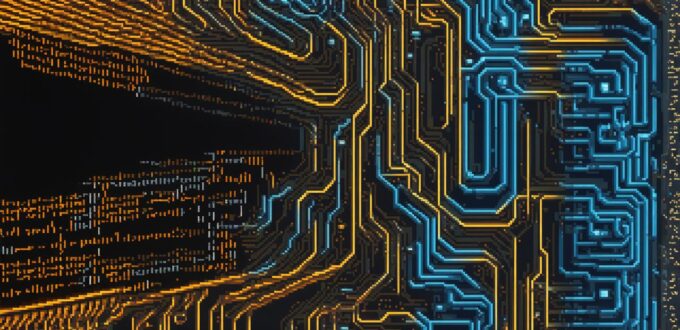There are several categories of software, each with its unique features and functions. These include:
-
An operating system is a type of software that manages computer hardware resources and provides common services for computer programs. Examples of modern operating systems include Windows, macOS, and Linux. Operating systems provide the foundation for all other software applications to run on, allowing them to interact with the hardware components of a computer.
-
Productivity software includes applications such as word processors, spreadsheets, presentation software, and project management tools. These programs are designed to help individuals and teams work more efficiently. Examples of productivity software include Microsoft Office, Google Drive, and Asana. Productivity software enables users to create, edit, and share documents, presentations, and tasks with others.
-
Multimedia software is used for creating and editing various types of media content, including videos, images, music, and animations. Examples of multimedia software include Adobe Photoshop, Final Cut Pro, and GarageBand. Multimedia software provides users with the tools to create and manipulate digital media files.
-
Business software includes applications that are designed to help businesses manage their operations, such as customer relationship management (CRM) systems, enterprise resource planning (ERP) systems, and supply chain management software. Examples of business software include Salesforce, QuickBooks, and SAP. Business software helps organizations automate their processes, manage their data, and improve their decision-making capabilities.
-
Gaming software is used to create video games for various platforms, including consoles, computers, and mobile devices. Examples of gaming software include Unity, Unreal Engine, and CryEngine. Gaming software enables game developers to create immersive and interactive experiences for players.
-
Mobile software includes applications that are designed specifically for smartphones and tablets. These apps can be used for a variety of purposes, such as communication, entertainment, education, and business. Examples of mobile software include WhatsApp, TikTok, and Duolingo. Mobile software has become an essential part of our daily lives, providing us with convenient access to information and services on the go.
-
Web software is used to create websites and web applications. Examples of web software include HTML, CSS, JavaScript, and PHP. Web software enables users to access and interact with content and services through their web browsers.

Characteristics of Software:
Software has several essential characteristics that distinguish it from other types of technology. These characteristics include:
-
Modularity: Software can be broken down into smaller components or modules, which can be developed, tested, and maintained independently. This modularity allows developers to create large and complex systems by combining smaller, more manageable pieces.
-
Portability: Software can be run on different hardware platforms without the need for significant modifications. This portability allows developers to create software that can run on a wide range of devices and operating systems, making it accessible to a larger audience.
-
Scalability: Software can be adapted to meet changing needs by adding new features or modifying existing ones. This scalability allows developers to create software that can grow and evolve as the needs of its users change over time.
-
Interoperability: Software can be designed to work with other software applications and systems. This interoperability allows developers to create software that can interact with other systems and data sources, making it more useful and versatile.
-
Reusability: Software components can be reused in different contexts, saving time and effort for developers. This reusability allows developers to create software more efficiently and effectively, reducing development costs and improving the overall quality of the software.
-
Maintainability: Software can be easily maintained and updated as needed. This maintainability allows developers to fix bugs, add new features, and improve the performance of the software over time.
-
Flexibility: Software can be customized to meet the specific needs of its users. This flexibility allows developers to create software that is tailored to the unique requirements of different groups or individuals, making it more effective and efficient.
Applications of Software:
Software has become an essential part of our daily lives, with applications in almost every aspect of our personal and professional lives. Some examples of software applications include:
-
Communication: Software such as email, instant messaging, and video conferencing enables users to communicate with others efficiently and effectively.
-
Productivity: Software such as word processors, spreadsheets, and presentation tools helps users create and manage documents, presentations, and tasks.
-
Entertainment: Software such as games, music players, and streaming services provides users with entertainment and leisure activities.
-
Education: Software such as online courses, educational games, and interactive learning tools helps users learn new skills and knowledge.
-
Business: Software such as CRM systems, ERP systems, and supply chain management software helps organizations automate their processes, manage their data, and improve their decision-making capabilities.
-
Healthcare: Software such as electronic health records and telemedicine tools helps healthcare providers deliver better care to patients.
-
Science and Technology: Software such as scientific simulation software and data analysis tools helps scientists and engineers to conduct experiments, analyze data, and make predictions.
Summary:
In conclusion, software refers to a set of instructions that tell computers what to do and how to perform specific tasks. Software has transformed almost every aspect of our lives, impacting communication, productivity, healthcare, education, science, and technology. As a software developer, it’s essential to understand the basics of software development and its importance in various industries and applications. By using real-life examples and case studies, we can illustrate how software has made a positive difference in people’s lives and contributed to economic growth and innovation. With the rapid pace of technological advancements, software will continue to play an essential role in shaping our future.
